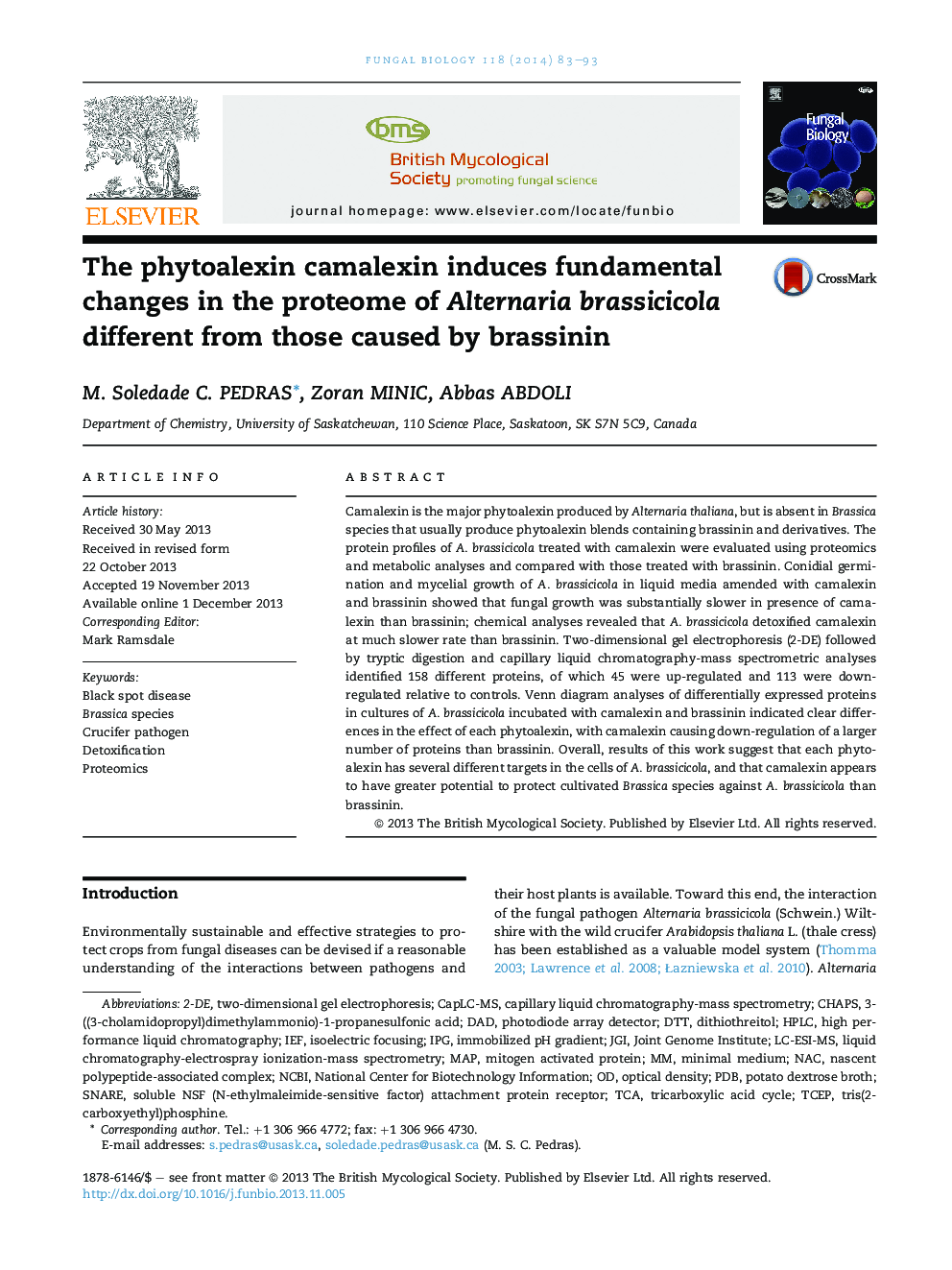| Article ID | Journal | Published Year | Pages | File Type |
|---|---|---|---|---|
| 4356941 | Fungal Biology | 2014 | 11 Pages |
•Alternaria brassicicola mycelia treated with camalexin was fractionated into soluble and microsomal fractions.•Soluble and microsomal fractions were separated by two-dimensional gel electrophoresis (2-DE).•Capillary LC–MS analyses of tryptic digests identified 158 differentially expressed proteins.•Camalexin treated mycelia displayed 45 proteins up-regulated and 113 down-regulated relative to controls.•Camalexin (>6 d) was detoxified at much slower rate than brassinin (<48 h).
Camalexin is the major phytoalexin produced by Alternaria thaliana, but is absent in Brassica species that usually produce phytoalexin blends containing brassinin and derivatives. The protein profiles of A. brassicicola treated with camalexin were evaluated using proteomics and metabolic analyses and compared with those treated with brassinin. Conidial germination and mycelial growth of A. brassicicola in liquid media amended with camalexin and brassinin showed that fungal growth was substantially slower in presence of camalexin than brassinin; chemical analyses revealed that A. brassicicola detoxified camalexin at much slower rate than brassinin. Two-dimensional gel electrophoresis (2-DE) followed by tryptic digestion and capillary liquid chromatography-mass spectrometric analyses identified 158 different proteins, of which 45 were up-regulated and 113 were down-regulated relative to controls. Venn diagram analyses of differentially expressed proteins in cultures of A. brassicicola incubated with camalexin and brassinin indicated clear differences in the effect of each phytoalexin, with camalexin causing down-regulation of a larger number of proteins than brassinin. Overall, results of this work suggest that each phytoalexin has several different targets in the cells of A. brassicicola, and that camalexin appears to have greater potential to protect cultivated Brassica species against A. brassicicola than brassinin.
Graphical abstractFigure optionsDownload full-size imageDownload as PowerPoint slide
